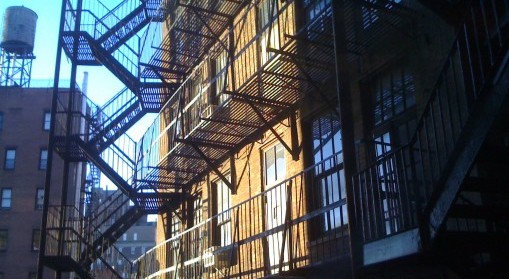You Are Here
Posted on December 9, 2010 | posted by:Not long ago, I overcame a dependency on my map app. I was racing against the clock and had managed to head out the door with just an address. Resurfacing from the subway, with five minutes to the deadline and a dead cell phone, I was paralyzed at a decision point: turn right, or left? Manhattan’s grid formation gave way to angled and named streets in this particular neighborhood. The thing that saved me was the peach-colored sunlight on the side of a brick building: it was sunset. Suddenly, I discovered my position in relation to the planets and knew to continue straight ahead.
There’s something to be said for getting lost without a navigational aid: it affords us the opportunity to revisit our innate methods of course-correction. We find meaning in making the connections and relationships that place us in the context of our environment. So perhaps wayfinding can be considered an essential human need, one that we’ve come to mediate through artifice.
In our excitement to have technology solve rote problems for us, though, we may have misjudged the value of this particular task. Thanks to the convenience of global positioning systems, we’re developing an instinct to reach for our smart phones rather than read our surroundings more carefully. And, contrary to its perceived efficiency, the mobile interface demands that we translate our real-space context into that of a tiny handheld screen, and back again. In worst-case scenarios, drivers relying on these technologies are directed onto train tracks or into lakes. These types of devices don’t take into consideration the fact that we experience the environment with all of our senses, as well as with creative ingenuity.
Elegant and dynamic representations of information, with which designers are currently enamored, have shifted mapping into the field of research and away from defining spatial relationships. At the current rate of construction, demolition and traffic flow, the built environment—and our position within it—shifts so rapidly that the practice of mapping it may even be obsolete. In order to find our way, perhaps we should turn our attention to the types of tools that work directly with the elements of real space, in the ways that compass needles find magnetic fields, and moss finds the north side of a tree, and sailors once oriented themselves to the stars. By building on cues that naturally exist in our environment, we might design more intuitive ways to navigate it.
